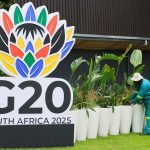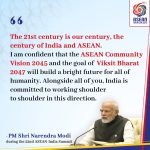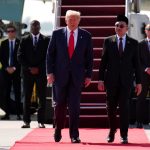 KATHMANDU: It’s a gloriously sunny day, the kind of weather that should stimulate imagination and inspire some out-of-box thinking in leaders of South Asian countries, who will gather in the Nepali capital to invigorate a 29-year old regional grouping that is still itching to take off.
KATHMANDU: It’s a gloriously sunny day, the kind of weather that should stimulate imagination and inspire some out-of-box thinking in leaders of South Asian countries, who will gather in the Nepali capital to invigorate a 29-year old regional grouping that is still itching to take off.
Deeper Integration
The summitry atmospherics can be felt everywhere in Kathmandu, with colorful banners proclaiming the tag line of the 18th SAARC summit: “Deeper Integration for Peace, Progress and Prosperity.” The theme song encapsulates in a miniature the abiding master-theme of the November 28-29 summit, and the driving impulse of the SAARC process itself. And rightly so.
For despite all grand-sounding declarations for the last 17 summits, South Asia remains the least integrated region in the world. Economically, intra-SAARC trade remains dismal and cross-border investments are minimal. Add to this, festering suspicions among smaller South Asian countries about perceived hegemonic ambitions of India, the largest economy and the most populous country in the region.
Most importantly, the unrelenting rivalry between India and Pakistan has tended to envelop the SAARC and thwarted its huge potential. This iteration of well-known ailments that plague the regional grouping should not detract from small but meaningful steps the grouping has taken to cement the architecture of regional integration. Initiatives like the setting up of a South Asian University, SAARC Development Fund, a SAARC Food Bank to supplement national efforts in times of crises, and SAARC Disaster Management Centre to bail out each other in case of calamities and natural disasters, are all links in the chain and part of the grand design of regional economic and cultural integration.
It is against this backdrop of the gap between the potential and the reality that the leaders of South Asian countries will be looking to firm up a more ambitious blueprint for spurring regional economic cohesion and binding the region together in a closer web of rail, road and air links.
For India’s Prime Minister Narendra Modi, his trip to Kathmandu to attend the SAARC summit has coincided with the six months of the inauguration of his government when he invited the leaders of all South Asian countries to his swearing-in ceremony. The neighbourhood first mantra of the new government in New Delhi will be again in focus, with India’s leader expected to unveil ambitious initiatives for promoting economic and cultural connectivity in the region.
In a way, all eyes will be on Mr Modi’s SAARC debut and his vision for raising the bar for the SAARC dream. Home to vibrant and emerging democracies, growing economies, and home to 1.7 billion people and major religions of the world, South Asia has all the makings of a regional dynamo itching for its place under the global sun. It’s time for the leaders of the region to put a stop to endless visions and revisions and take firm and decisive steps to pitch the SAARC into a higher trajectory. For dreams deferred indefinitely go stale, and get swamped into the bog of sterile cynicism. The freshness of the mountain air and the bracing sight of the Himalayas glinting in the winter sun should germinate some fresh thoughts for reaffirmation and renewal of this underestimated and much-derided regional grouping that could visibly transform the lives of its over 1.5 billion people.
Author Profile

- Manish Chand is Founder and Editor-in-Chief of India Writes Network (www.indiawrites.org) and India and World, a pioneering magazine focused on international affairs. He is CEO, Centre for Global India Insights, an India-based think tank focused on global affairs.
Latest entries
 In ConversationNovember 26, 2025G20 is a Force for global Good
In ConversationNovember 26, 2025G20 is a Force for global Good articlesNovember 26, 2025Rescuing G20 from North-South divide: Ubuntu Moment
articlesNovember 26, 2025Rescuing G20 from North-South divide: Ubuntu Moment India and the WorldOctober 27, 2025Modi hails the century of India and ASEAN, backs ASEAN centrality
India and the WorldOctober 27, 2025Modi hails the century of India and ASEAN, backs ASEAN centrality India and the WorldOctober 26, 2025Act East: Five reasons why ASEAN summit in Malaysia matters
India and the WorldOctober 26, 2025Act East: Five reasons why ASEAN summit in Malaysia matters








